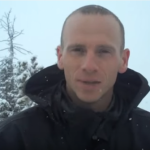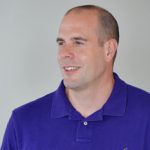
Today I have an interview (MP3 Podcast and Transcript) with a very good buddy of mine – Lewis Howes.
Lewis Howes has one of the coolest and most inspiring stories of any online marketer I know and I am pleased that he has gave us so much background not just on Linkedin.com but also on his personal story and how he has overcome adversity to be where he is today.
Like all great entrepreneurs Lewis’s story starts with an idea
Following a Football Injury (more on that in Interview) Lewis had a lot of time on his hand and spent a lot of time on LinkedIn – building relationships and connecting with people. (This was a couple of years ago when there was only something like 23 Million people on LinkedIn.com)
Lewis became an EXPERT on Connections and online networking (all great entrepreneurs are) and one day had the ‘crazy’ idea of trying to get people to meet physically and not just in the virtual world of LinkedIn.com.
Using his personal 30,000 plus email list of contacts he built up using LinkedIn he promoted a 20-city tour around the US. Entry to these live networking events was not expensive (between $5 and $20) but on average he got 300 people and sometimes up to 500 people coming to these events – all marketed via LinkenIn.com
And that is just part of his story. Even if you have never thought LinkedIn was a medium you wanted to use in your business please listen to this interview – I just have a hunch that Lewis may change your mind – plus either way you will be inspired.
And the other great think about Lewis as you will find out in this interview is that he is a very cool guy to hang out with. I believe in ‘modeling’ the success strategies of others and what they do that works. Perhaps the coolest thing about Lewis and the thing that more of us could do with modeling is his authenticity. He is sincere, approachable, caring and inspiring. He is not a Pitch Master – Lewis always delivers value first, indeed his success is as a direct result of him adding value first. That is a powerful point to remember.
Add Value First and The Money Will Follow
Enjoy the interview. I’d be really interested to hear your experiences with LinkedIn.com as well. What has worked for you and indeed what has not.
To Our Success
Michael Dunlop
[audio:http://incomediary.s3.amazonaws.com/LewisHowes.mp3]Interview With Lewis Howes – Linkedin.com Expert
Michael Dunlop: Hey, guys. Michael Dunlop here, from . Today, I’m with my good buddy, Lewis Howes, who I met back in May, and we have been chatting loads. He is a very intelligent guy, expert in LinkedIn, branding, webinars… You name it, he knows lots about it. So I’m really looking forward to picking his brain. So welcome, Lewis.
Lewis Howes: Thanks, Michael. How are you doing, my man?
Michael: Very good. I think it is only fair that we start with your story, because you have got a crazy story. Started as a footballer, had an accident and now you are an Internet entrepreneur. So take us through that real quick.
Lewis: Yeah, I guess when you mean footballer, I mean American football as opposed to soccer player, but I used to play professional football here in the US. And to make kind of a long story short, I got injured early on during the season, broke my wrist in a game while diving for a football, played wide receiver, dove into a wall, snapped my wrist, played the next 14 games with a broken wrist, had surgery after the final game and they took a bone out of my hip and put it into my wrist because my wrist bone had crumbled so much from playing those 14 games while it was broken. So for the next six months, I had a full arm cast on my arm, so basically at 90-degree angle up in the air was my arm. Couldn’t move it, couldn’t turn it, and couldn’t do anything. And I had 20 staples on my hip for six weeks, so I couldn’t walk for a while as well, basically ended up going from doing something that I was the most passionate about in my life which is playing football, getting paid to play football to sleeping on my sister’s couch for the next six months because I didn’t have a job. I basically fired myself from my job by getting injured, and was living off of three credit cards at that time.
So during that time, I basically was a little bit depressed, but I had all the free time in the world because I couldn’t work out, couldn’t get a job, couldn’t play football or anything, so I basically spent six to eight hours a day using LinkedIn. A mentor of mine introduced me to LinkedIn and suggested I start getting on it to build, I guess, my relationships with business contacts and see what type of opportunities were on there.
So I went full steam ahead six to eight hours a day on LinkedIn for the next six months, and it kind of hasn’t slowed down ever since.
Michael: Very good. And so from LinkedIn to Internet entrepreneur, what happened to make you start making money online?
Lewis: You know, I was building like this huge email list through LinkedIn. I probably built up around 30,000 to 35,000 personal email list in the first six to nine months through LinkedIn just because I had a lot of free time and I was kind of figuring out. I got on there a couple of years ago when it was only about 23 million people on there, now there’s over 80 million people on. So it was kind of, lot of people still weren’t figuring it out. They didn’t know how to use it. Was it a site for job seekers? Was it a resume site? They were trying to figure it out and I was just connecting with people and figuring out that it was a great way to drive traffic to things that you could build a email list because it is the only social networking site we could export your database, your friends list as opposed to Facebook or Twitter, you can’t do that.
And so, I was building this huge network basically and what I did early on, I had zero business experience. I still hadn’t graduated from college and never worked at jobs. I didn’t know what I was doing, but I decided that I’d have these big audiences in various cities around the country. And I thought you know what, it would be great if I could bring these people together and help them build their business. I didn’t have a business or a product or a service at the time, but I thought one way I could help others and maybe generate some business for myself down the line was connecting people together.
So I thought it would be great to bring people together who were online on LinkedIn together in the real world, to kind of meet face to face and see how we can help each other. So I did, basically, a 20-city tour around the US and only used LinkedIn to promote these events. Some of them were five dollars, some were $10, some were $20, so nothing too crazy. But we will get around an average of 300, sometimes up to 500 people to come to these events every time and all I will do is market it on LinkedIn.
And people were amazed as to how many people I could actually get to live I guess networking events when some people couldn’t even get 100 people on a webinar. And so I started showing other people how to basically build their business with LinkedIn. So a lot of people were asking me to help them with their LinkedIn profile, help them with their business, so I started kind of consulting on LinkedIn.
I realized that I could use my email list, got 30,000 personal email list, was this very strong basically asset for me because I didn’t know what affiliate marketing was at the time and I was completely green with marketing online. But someone asked me to promote something, I think it was a webinar one time, I promoted it just to like a couple of my groups in my list or whatever on LinkedIn.
And we did over like $5,000 in sales stream, so I was like blown away that this could actually happen, just by promoting something. And from there I really delved deeper into it, understanding online marketing, created my own products, selling other people’s products through affiliate marketing and just kind of going to the next level from there.
Michael: Wow, pretty impressive. And I think a lot of my listeners today will be thinking how can I right now go to LinkedIn and get some traffic. Is it still possible?
Lewis: Oh, yeah. It is always one of the top five sites that drives, I guess, organic traffic back to my sites and sales pages each and every month. And there are some simple things you can do, actually wrote a post about the top 10 ways to drive traffic to your site using LinkedIn. If you just want to Google that phrase, you can learn more about it, but here are a couple of quick tips. Right off the top of the bat, you can get a ton of traffic and expose yourself to basically hundreds of thousands of highly targeted professionals by doing one simple step and I will walk you through it, although you just kind of got to stay with me, because it may be confusing without seeing the screen. However, what you can do, if you have an article or back to your website or sales page or anything you want to promote, any link, you can update that on your LinkedIn status section.
So basically you are updating a status like you would on Facebook or message on Twitter for those who don’t know about LinkedIn. For those who do know this, this will seem pretty natural for you. Go to your home profile, you will see a status update, put that link in there with a call to action just like you would on a tweet or Facebook update and then click “share”.
What that will do is that will send it out to the direct contacts that you are connected to on LinkedIn just like a tweet would. So that may not seem like a lot, what if you only have 100 people or 500 people that you are connected to, it is not going to get a lot of traffic, I understand that. The next step is what will help you tap into a larger network, a larger database, which again LinkedIn has the highest average household income over any other social networking site.
I currently average $109,000. Whereas, if you use Facebook or Twitter or MySpace, it is under $100,000 is the average household income. It is also higher than NewYorkTimes.com readers, Forbes.com readers, Entrepreneur.com readers. So you are dealing with highly targeted professionals when you promote anything on LinkedIn.
Also, 45 percent of business professionals on LinkedIn are business decision makers. So you are targeting people that make decisions, can take action, who have money, who can buy from you. And if you go to Twitter or Facebook, again, it is only around 25 to 29 percent are decision makers.
So back to this point of driving traffic to your site. After you click “share” on your status update, you are basically sending a status message update, you then click “share again.” So you will see that update go down on your LinkedIn profile, just like you would when it comes to a tweet. You could see that status update. And then, right below your link and your call to action and the picture that it was included in, you will see a button that says “share.”
You want to click the share button again and then a pop-up window will come over your screen and will ask you if you want to send a message to share it with groups, share it with other people in your network and things like that. You want to click on the “share to groups” button, so hopefully you are staying with me here.
Click on the “share to groups” button. By doing this, you can start typing in the various group names that you are already a member of, so you want to join up to 50 highly targeted groups in your niche. There is a group called “e-Marketing Association”, which has over quarter of a million people in it. There is entrepreneur groups, there is bloggers groups, there is business professionals, there is local market group.
So there is tons of groups out there, real estate or any type of group, you can type it in and you can join us. What you want to do is, start typing in these groups where it says “posted groups.” And what you are going to do then, if you are tapping into a larger database, larger networks like you didn’t have to put any effort into basically tapping into someone else’s network by posting your status update or your link to these groups.
That’s going to go into the discussion of the groups, that’s going to be emailed out to all those members of the groups, so people who are in those groups get a weekly email with those articles that people update with. So you are basically… Every time I post an article, I’m tapping into over 500,000 personal database from all the groups that I updated. That’s just one way you can do it, from posting a status update and then sharing it with all your related groups. It’s kind of a longer version of explaining it. Sorry.
Michael: No, that sounds really impressive. I’m sure everyone should actually look into it. Very good stats for LinkedIn, obviously. It’s a very talented group of people. So I know now that we can get some traffic from LinkedIn, but one of the real good things you’re really good at is monetization. Doing webinars, products, affiliate programs, all sorts I want to jump into webinars first, because you do really good webinars. So tell us about webinars. What are they, and why should people be doing them?
Lewis: Sure. Webinars are pretty simple, actually. As opposed to giving a live speech, you’re basically giving a presentation online to an audience. They can see your screen, they can hear you, they can ask questions by chatting or they can call in. It’s basically a teleseminar, but you’re adding a video element, so you have complete control of what people see. In my opinion, it’s probably 10 times more effective selling and getting your message across on a webinar than you would a teleseminar. It’s just common sense. When people visually see something and they hear something combined, it’s going to influence them more on a buying decision or taking action on whatever you have to offer.
So in my opinion, webinars are huge. I’m doing about three to five of them a week right now, live webinars, just because they’re converting so well to me. Not only for my own products to my own list, but getting other people to promote my products as well. I’ve got a good business product, Sean Malarkey, who does these webinars with me. He does more the technical side of things, and I do more the marketing and sales side of things.
They’re extremely powerful. Just to give you an example, you don’t have to be an expert at webinars. Our first webinar, we did about $12,500 in sales. We had a presentation that had three janky slides with ugly bullet points, no pictures. Our audio was all messed up. The video was messed up. We were flustered, things like that. We started late. And we still did over $12,500 in sales in our first webinar. And we did over $17,500 in sales on a webinar recently last week, where we didn’t even start until 20 minutes after the presentation was supposed to begin because there was a technical issue with the audio.
So you can succeed on a webinar just by the fact that it’s a webinar, in my opinion. People love being able to see something. Even if you mess up, or you’re not an expert, you can still generate sales doing webinars. So that’s my thoughts on it.
Michael: Very impressive. I imagine one of the things that you struggle with with webinars is making sure people are on at that particular time. How did you get around that issue?
Lewis: We tested it with our list. We figured out that most of our list is on East Coast time in the US, so we do a lot of them around lunch time. If people have lunch breaks, we do them for an hour around noon. Or we do them around eight or nine p.m. at night, when most people relax, come home, eat dinner, put the kids to bed and things like that. You’re never going to get everyone on your list on, obviously. We did a webinar last week, again, that did over $17,500 in sales and had 925 people on live. There’s definitely a strategy of getting people on, a marketing strategy. We do a four-day promotion beforehand. We do reminder emails 10 minutes before, asking them if they’re on already. A lot of different things. We use social media, we use social proofing in getting people on. So you just want to make sure you do a right marketing plan of getting people on live.
[laughter]
Michael: Wicked. So you mentioned earlier that you get people on a webinar, you talk about stuff, you teach them some stuff, and at the end, you’ll sell them something. How do you go about creating your products? I presume most of them are quite high-end. What tips would you give to people who think right now, “Actually, I’d like to have a product online.”
Lewis: You know, the best way to create a product… I remember trying to create my first product. I had no idea what I was going to do. This was when I had no clue what I was doing. I didn’t even know what affiliate marketing was. I didn’t know how to create a video, even. I was so green. I just thought, “How can I create a product?” And Joel Comm told me, “You know what? Just record a webinar. Do a live training for someone and record it. Map it out. Have some bullet points of exactly what you’re going to cover so that you can use that in your marketing. Have a plan or a blueprint, and just make it simple for people to understand.”
So the best way to create a product is to sell a webinar. Sell some type of training. You can do a free webinar to get people on the call. Give them some great free trips, and at the end, sell them. If they want advanced training, then they can go through your three-hour webinar course, whatever it may be, or your six-week webinar boot camp.
You can do one-hour video, transcribe it, strip the audio, things like that. Make Cliffs Notes and just put it on a wish list WordPress site and throw up those videos and all that content. And you can sell that afterward.
So I like to create products on the fly before I actually lead them. A good test factor of you creating it is if it sells. If it doesn’t sell, then you don’t have to create that product. But if it does sell, then you can just deliver it live, record it, and then make that a home study course afterward.
Michael: Great advice. So you’ve told us about webinars, training products. You’ve got some membership sites. You do pretty damn well with affiliate promotions. If you could only focus on one, if you’re starting over again and you can only do one right now, which would it be?
Lewis: Hm-mm. That’s tough, because I like a lot of them. [laughter]
Michael: They all work really well together, right?
Lewis: They all work really well together, yeah, because they’re all extra revenue streams. I want to have multiple revenue streams, but if I had to pick one, right now I am dominating on webinars. It’s a great way to build your list. My list is my most important asset, and I’m sure you would agree with that for yourself. I’m building a list of over 1,000 or 1,500 people a week by doing webinars with other affiliates and also just promoting webinars via social media, getting people to opt in. Doing Facebook ad campaigns sometimes, getting opt-ins that way. It’s building my list, it’s building my brand. I’m connecting with an audience for 60 to 90 minutes at a time. They get to hear my voice. They get to see me sometimes. I answer their questions live. I give them a lot of good content.
So if you can get 500 to 1,000 people watching you three to five times a week, new audiences, you’re building your brand that way better than you can through a blog post or an audio or anything else except for live face-to-face interaction So it’s a great way to build that brand for long-term value. And then you’re also able to create a product and sell more products that way.
So webinars overall are the best, because you can drop people into continuity. You can drop people into high-ticket sales, low-ticket sales, live events, anything you want to do. So I’d say webinars right now.
Michael: All right, sounds good. So you just mention branding, and I have to admit, you do a really good job with your brand. Your brand is pretty much yourself, though, right? So what tips would you give to my readers in the business for building their brand online today?
Lewis: You know, early on I was following the Gary Vaynerchuks and Tim Ferrisses of the world just because that’s what I was reading early on, and I was inspired to connect with that mentality when I was trying to figure all this stuff out online. The thing that they do really well is just really authentic and genuine to themselves. Gary is really out there. He swears. He says whatever he wants. But some people really love that, because they appreciate him being himself and not being someone that’s fake, someone who’s trying to just pretend to be. So I would just say be yourself.
The one thing that I think has helped me and that I see others doing that really helps them with their brand is focusing on promoting others first and not really promoting yourself too much. When I studied sports professionals’ blogs early on, when I was just getting started, what I did was just interviewed executives and other high-end professionals in the industry, athletes, things like that, and promoted them. So it wasn’t really about myself. It seems contradicting, but promoting other people can help you build your brand in a positive way as well. So just be yourself and promote others.
Michael: That’s some top advice. I highly recommend that.
Lewis: You do that a lot, too.
Michael: Yeah. I mean, I’m interviewing you right now! It builds real good authority, because people associate me with you, and it will build my brand. So that’s great advice. I have to talk about this, because back in May, I didn’t know who you were. But since then, I have seen your face and name everywhere. You must do some really good networking. I want your top tips for anyone who wants to network and get themselves out there.
Lewis: The thing is, I tell a lot of people that I’m usually one of the dumbest people in the rooms. Someone like yourself, Michael, you’re 10 times smarter than me. You’re like 12 years old and making $20 million a year or something crazy. So you’re a lot smarter than myself. The one thing I think that I do well is just connecting with people and just being real with people. I think so many people try, either try too hard, they don’t put in any effort at all, they act like someone they’re not. All I try to do is just be friends with people. I don’t try to push anything. Like people, they’re just eager to have them promote stuff and things like that.
My main focus is just saying, hey, how’s it going? And then try to relate with them on a personal level, not a business level. By connecting with them, talking about sports, talking about whatever, dating, whatever it may be. But getting on a different level besides asking them if someone will promote or sucking up to someone or whatever it may be, just connecting with people on a personal level is the best way to network.
What I do, what I’ve done over the last two years, is to do this I guess somewhat well, is to go out and go to all the major conferences and events that the major players and the major influences in my industry network go into. I travel a lot because I believe that connecting face-to-face with someone and getting on that personal relationship level with them will allow you to do anything you want at any time in your life in business with them. If you can connect with them on a personal level then you can do whatever you want.
When I first met you, we were talking about girls and partying and hanging out and going out that night and things like that, and we’re just kind of hanging out on a personal level. We were mentioning different friends we knew and things like that. But I wasn’t asking you to promote. I wasn’t asking you to do anything for me. I was just like hey, how’s it going? Man, I love your stuff. And how’s the love life? Basically stuff like that.
By doing that, by getting on that personal level with someone and just being friends with them, you’re building a strong relationship off the bat where they’re breaking down the barriers of trust with you. So they’re more like to trust you in the future, to recommend you, to promote your stuff, whatever it may be.
You’re building more than just business relationships. You’re building lifelong friendships. For me, it’s all about the true honest friendships than it is about doing business with someone. So that’s my part of it, just really become friends with someone. And the best way to do that is late at night at parties, at events.
Michael: So true. You speak a lot of truth. I have to admit, from the point of view of somebody who would be coming to me and saying, want to be my friend or get in my radar, the worst thing you could do is pitch me, come up to me and say, “I could do something for you. You should buy this. We should ponder…” That’s so unattractive. You just hang out, have fun and work.
Lewis: Just chill.
Michael: Yeah and then follow up later or something. I don’t know but…
Lewis: Yeah, or promote them first.
Michael: Yeah.
Lewis: Never ask for anything.
Michael: Yeah. Doing something for someone first is one of the best things you can do. OK. So we’re finishing up soon but I have to go into this as well. You’ve achieved so much over maybe the last two or three years since your accident. You have an amazing mindset. How do you think you’ve been able to do so much so quickly?
Lewis: It’s funny that you mentioned it, because I’ve lately been strategizing on my next book, it’s going to be about how to translate the athlete mindset into business. Because there’s so many professionals, there’s so many people that I know that want to make it, who have been in the business longer than me but I’ve surpassed already, or just don’t know how to get to the next level, don’t know how to make a side income that replaces their normal income. They’re just trying to figure out how to do it all. I think that’s the thing that they do wrong, they try. They try too hard and they don’t just take action. For me, again I say I’m one of the dumbest people in the room usually but I love to get results and I love to take action to get something finished. I think that’s the difference between I guess… Some people who aren’t athletes have this mindset as well, so it’s not just an athlete mindset.
But I think in general, as an ex-professional athlete I know a lot about pain. I went through broken bones pretty much. Many years I played football. I know a lot about the taste of failure and the taste of losing, how bad it sucks after you put so much energy, sweat and tears and agony into trying to win something. I just know a lot about all of those things through playing and just kind of having it as an athlete.
So for me, the business world wasn’t hard for me to transfer into except for the initial stage of trying to figure out, wow this is a different thing. I can’t just go and hit someone or catch a football and be successful. I really need to figure out the strategy behind business, how people interact in business, some of the technical things of business and things like that.
Once I got past the early stages of just being scared of just being in the business world and dealing with money and things like that as opposed to dealing with the game, my mindset just took over. I said, “You know what? The only thing you need to do to achieve this is take action and you’ll get results. If you don’t get results, you test and tweak just like you would in a football game. You practice something else. You make a different slight adjustment. You do it until you get it right.”
It’s pretty simple in my mind if you just translate it that way. But a lot of people have this thing holding them down because they can’t get that through their head or in their mindset. They over-analyze everything. They try way too hard. And they make a ton of excuses. Too many excuses are going around these days and not enough action. So people just need to shut up, take action and tweak and test along the way. That’s my thoughts.
Michael: Great. I couldn’t agree with you more. I mean, that’s what I try and preach to a lot of people. OK. So with Internet marketing and a lot of things really, everything’s always changing. There’s something new every day and something stops working every day. What are you working on right now? What’s working for you?
Lewis: Webinars again are really working and that’s why I’m hitting them hard. Also, I think that the novelty factor of social media, like social media isn’t a fad and it’s going to continue for a long time in my opinion. It’s just going to be a different name or it’s going to evolve, but a lot of people are going to be doing business through networking online. However, I feel like a fundamental shift… Everyone went from connecting the real world to then just connecting online and that being like the main thing. They can sit behind their computer and they can connect with people. But I think it’s going to be shifting back to everyone’s going to need to be going out and connecting with real people face-to-face here in the near future or else you’re going to be missing the boat.
For me, just being active and engaged… I’m a people person so I have to be around other people or I’ll just go crazy just in front of a computer all day. So for me, I’ve been going out and networking and throwing events, hosting events, attending events, speaking over the last two years all around the world. I see that it’s so powerful to do this in person because I’m building a database that trumps an online database only. So the more you can go out and speak, the better.
That technology or that strategy is never going to change. Webinars may go out of style. Again, certain things online may go out of style and there’s new technologies that come in. But networking face-to-face and literally building those relationships, you’ll be able to leverage that with whatever technology, whatever strategy online, with a webinars membership sites, creating big ticket items. Whatever it may be, you’ll be able to leverage that once you connect with people face-to-face and build those relationships.
So that’s kind of my shtick there.
Michael: All right. To finish this interview off, tell us. If you could start all over again and do one thing differently, what would it be?
Lewis: Well, I was kind of lucky because I built a list pretty fast. When a lot of people say that’s there one thing they wish they did is sort of building a list bigger, but if I had to start all over again I would have been even more aggressive in building a list in multiple different ways, of not just on LinkedIn. I would have created an article every day on my sites and been so aggressive in building an email list and probably would have tried to get into webinars earlier. So building a list, getting into webinars earlier and… I mean, I went out early on and did public speaking. I joined a public speaking class, practiced every week and went out and did it for free because I knew that if I wanted to influence people that I would have to be able to do it best on stage.
So public speaking, I did that early on but if I was someone else I would give public speaking, definitely building your list as aggressively as humanly possible without offending the majority of people who are reading your contents and doing webinars. That’s what I would do.
Michael: All right, great advice. And I hope you guys listened to his last few things, because those are all things that I even say myself. Especially list building, it’s one of the biggest mistakes most people make. They don’t pay enough attention to it when they start. So, great advice, Lewis. Thanks very much for sharing all your advice and I look forward to hearing more from you in the near future.
Lewis: Thanks, Michael. My pleasure.












Pingback:Homepage